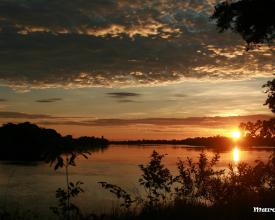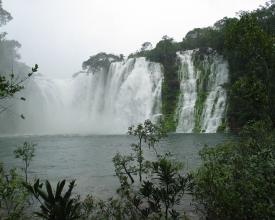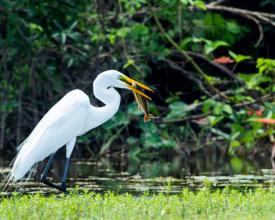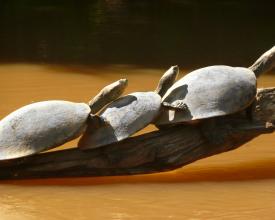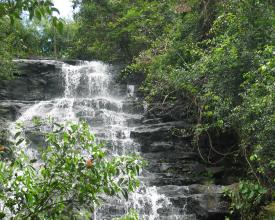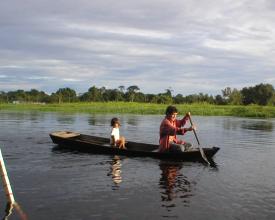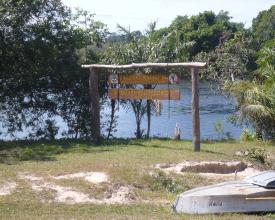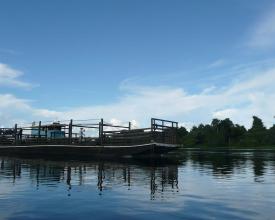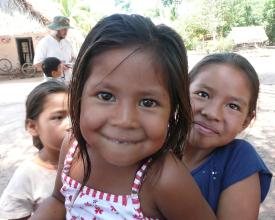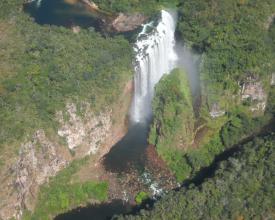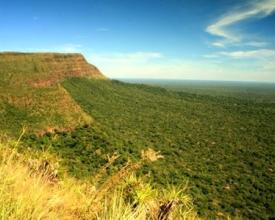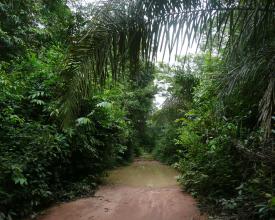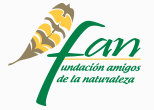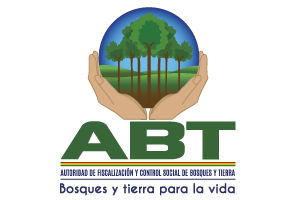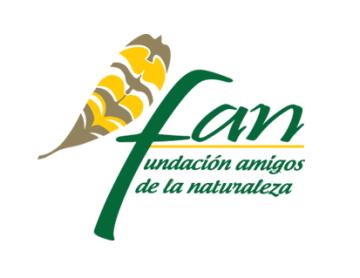
Noel Kempff Mercado National Park, an innovative management model of co-management and a pioneer in the mitigation of carbon dioxide worldwide
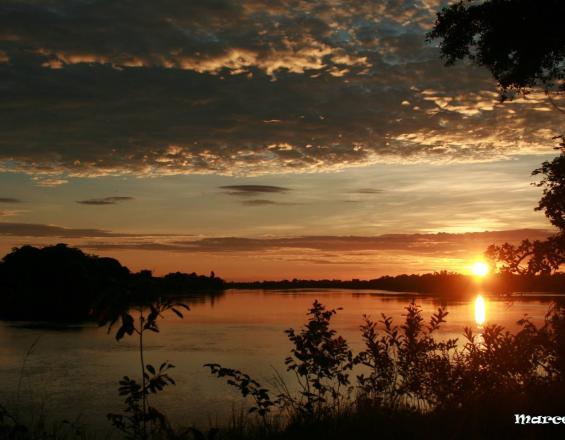
Building on targeted funding and technical assistance, an innovative co-administration system between the National Government of Bolivia and the Friends of Nature Foundation (FAN) was set up in National Park Noel Kempff Mercado (PNNKM) between 1995 and 2005. Undoubtedly, one of the major contributions was the Noel Kempff Mercado Climate Action Project, managed by FAN, as a clean development mechanism for the mitigation of greenhouse gases.
Context
Challenges addressed
The current threats to this park are along its Brazilian borders and are connected to illegal logging, fishing, and hunting. Besides that, there are certain activities in place that foster land use change in the city of San Ignacio de Velasco, Bolivia, as well as in the proted area buffer zones, where there are unplanned human settlements, mining, and logging.
Other challenges are connected to the management of 1.5 million hectares, which requires high financial costs, as well as high demands structural and operational demands. On top of this, the decentralization of governmental responsibilities demanded new skills to assume a participatory management model that involves local government and local communities living close to the Park. Finally, the changes in the national socio-political context represent a challenge in ensuring long-term financial stability.
Location
Process
Summary of the process
The management model of the Noel Kempff Mercado National Park is an example of good practices that stands out for being an innovative system comprised of three key elements: co-management, governance with the participation of local population, and the development of effective funding strategies. The co-administration of the protected area for a ten-year period between the National Government of Bolivia and the FAN enabled the Park to develop a wide and multi-dimensional view that helped create, in the medium term, essential elements for the management of the protected area. Among them, the institutionalization of management tools and the creation of innovative funding strategies in the long term, such as the implementation of the PAC-NKM. Along with these, the creation of the Management Committee, as a decision-making body, and the effective participation of the local population, were fundamental.
Building Blocks
A co-administration model for effectiveness management and conservation of the protected area
The co-administration model of the Noel Kempff Mercado National Park (PNNKM) between the National Government of Bolivia and the Friends of Nature Foundation (FAN), from 1995 to 2005, set a foundation for institutional strengthening for the Park’s management. This model enabled the consolidation of the area and structured a planning process through the application of institutionalized management tools such as the Protection Plan (2013-2017) and the Annual Operational Plan, which had rarely been used in the National System of Protected Areas (SNAP). Likewise, the FAN contributed in procuring funding to ensure management sustainability, mainly through the Noel Kempff Mercado Climate Action Project (PAC-NKM). Adding to this, the promotion of participatory mechanisms, such as the Park Management Committee and the involvement of members of local communities in operational instances and decision-making, have been fundamental in improving the Park’s management.
Sadly, this co-administration model was phased out in 2006 due to changes in the national socio-political context witch centralized management of protected areas within the National Government. The main impact of this change is seen in the Park’s financial sustainability.
Enabling factors
- Decision and political leadership of the Government of Bolivia to extend the PNNKM through Supreme Decree.
- The signing of a co-management agreement between the FAN and the Ministry of Sustainable Development and Environment (1995).
- Creation of the Management Committee of the PNNKM.
- The inclusion of local communities in the planning, management, and natural resources protection processes in the Park.
- Development of economic activities compatible with the principle of human-nature coexistence.
Lesson learned
- The strategic vision for establishing a mixed management model integrating a regulating and oversight role for the National Government with the management capacity of the FAN was a key driver for revitalizing the Park’s management.
- Since 1997, the presence of logging concessions was reverted, and the protected area was extended from de 642,458 hectares to 1,523,446 hectares. This was
- achieved under the framework of the PAC-NKM, with a process of economic compensation, together with the develpment of a Protection Program and a Community Development Program to promote governance and social participation.
- The promotion of participatory mechanisms such as the Management Committee and the involvement of members of local communities made the Park to become the protected area with the second largest number of park rangers in the country, with a high percentage of representatives of local communities. This helped improve relations and support by local communities in the preservation of the area.
Effective governance through community participation
The Bolivian legal framework establishes the legitimate right of groups of local actors to decide on protected areas management and their natural resources. Since 1996, the Noel Kempff Mercado National Park developed a governance model through the creation of a Management Committee that was built gradually and that nowadays helps in planning, decision-making and the achievement of management goals for the area. The actors of the Committee are members of national, departmental, and local government as well as members of the non-government sector, with the participation of the Friends of Nature Foundation (FAN) during the co-management period of the Park (1995-2005). It also includes representatives of the seven indigenous communities and the Bolivian Indigenous Union of Bajo Paraguá. Besides this, since 2013 two additional governmental institutions participate with only the right to vote. Both of them are important in border protection and in supporting the protected area and its neighboring communities development. Since the creation of Management Committee, it has worked as a strong governing body for the protected area, without interruption in its meetings.
Enabling factors
- National Legal Framework: Law of Popular Participation.
- Strategic vision of implementing a multi-dimensional management model based on the inclusion of actors in the decision-making processes.
- Institutionalization of the Management Committee in the Management Plan,
- as the instance of representativeness of the local population.
- Training processes for the members of the Management Committee.
- Preliminay consultation processes with the local communities institutionalized
Lesson learned
Thanks to the meetings of the Management Committee, the communities, the local authorities, and the Park Administration participate in the decisions about the protected area planning and management. This established and strengthened the bond between the Park Administration, community members, and other actors connected to its management. For several years, the transportation of participants to the meetings was incentivized and subsidized by protected area projects. Currently, ordinary meetings are conducted every four months, with extraordinary meetings when necessary, but transport for the members is dependent on Park subsidies. The inclusion of the local population in the decision-making process allowed to incorporate different views about the management of the area, which strengthens its management and administration, and brings greater legitimacy to the decisions and strategies.
Implementation of a pioneering project and its effectiveness as a strategy for financial sustainability
The Noel Kempff Mercado Climate Action Project (PAC-NKM) was designed in 1996, with the participation of the National Government of Bolivia, the Friends of Nature Foundation (FAN), the Nature Conservancy (TNC,) and three foreign corporations from the energy sector. Its goal was to avoid or mitigate the emission of up to 5.8 million tons of CO2 over 30 years (1997-2026) on a surface of 600,000 hectares. This project was positioned as the first forest-based carbon sequestration project in the world and is sought to be replicated in other countries, as it allowed to certify nearly a million tons of CO2 during its first nine years of implementation (1997-2005). As this is an action implemented in accordance with the United Nations Framework Convention on Climate Change (UNFCCC), a trust fund of 2.5 million dollars was established to contribute to the Park’s sustainability in the Protection, Community Development, Monitoring and Verification of Carbon Sequestration, and long-term Financing Programs. Despite being designed to work until the year 2026, the execution of the PAC-NKM was halted in 2013 with the intention of adapting it to the new political framework of Bolivia, in connection to the Mother Earth Joint Mechanism.
Enabling factors
- National and international policies for the design and implementation of PAC-NKM.
- Government commitment and continuity of the technical and scientific team of PAC-NKM.
- Participation of the governmental sector, civil society, and business sector in the verifiable measurement of changes in carbon volume.
- Synergy between the Park co-management and PAC-NKM administration.
- Scientific support of collaborating partners in baseline set up, implementation, and monitoring of the project.
Lesson learned
PAC-NKM allowed the reversal of logging concessions, through a financial compensation process and deforestation prevention actions. The innovative methodologies for carbon sequestration monitoring and assessment of the deforestation reduction effectiveness allowed to scientifically demonstrate the feasibility of carbon emissions quantification. This made PAC-NKM into a world referent in carbon credits quantification and positioned the Park as the first to be certified by the General Surveillance Society (SGS) under the standard of the Clean Development Mechanism, despite being a non-eligible activity.
The project also promoted the Community Development Program, which supported processes for participatory planning, health, education, micro-businesses, sustainable management of natural resources, and forestall management. This helped achieve the legal consolidation of the indigenous territory of the Guarasug´we Chiquitano of Bajo Paraguá.
Resources
Impacts
- It was possible to revert the presence of logging concessions and implement actions to prevent deforestation associated with local economic activities.
- Prevention of the emission of 1 million tons of CO2 to the atmosphere, between 1997 and 2005, through voluntary reduction, certified by standards of the Clean Development Mechanism.
- Enlargement of the Park’s area, from 642.458 hectares to 1.523.446 hectares.
- The strengthening of internal organization complemented the processes of construction of the Management Plan and the institutionalization of management tools to improve its effectiveness.
- Better relations and support in decision-making by the local communities was achieved, through participatory mechanisms such as the Management Committee and the involvement of local park rangers.
- Development of innovative and internationally renowned methodologies to monitor carbon dioxide in forests and assess the effectiveness of deforestation reduction, and the level of mitigation of greenhouse effect gasses.
- The existence of funding to support local participatory planning activities, and projects related with health, education, self-employment, micro-businesses, micro-credit, basic infrastructure, and forest management in the communal area next to the Park.
- Legal consolidation of the indigenous territory Guarasug´we Chiquitano of Bajo Paraguá.
Beneficiaries
The influence area of the Park is adjacent to the indigenous territory of the Guarasug`we Chiquitano of Bajo Paraguá, with 283 families of 5 communities of Chiquitano and Guarasug`we orgien: Florida, Porvenir, Piso Firme, Cachuela, and Bella Vista.
Sustainable Development Goals
Story
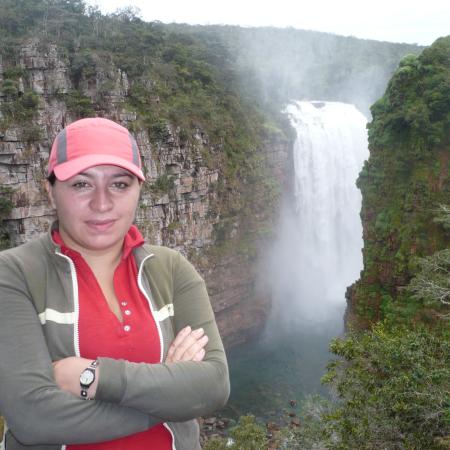
“The Friends of Nature Foundation began its formal involvement with the Noel Kempff Mercado National Park under the model of co-management that was originally created in the period between 1995 and 2005. This was an interesting model, as there was a latent weakness in having only one entity to solve all the problems deriving from such a large protected area. In this way, the co-management model allowed the participation of several organizations in the preservation of the Park without needing to resort to privatization.
One of the commitments of co-management was the procurement of additional funding to ensure the financial sustainability of the Park. In this way, we designed the Noel Kempff Mercado Climate Action Project (PAC-NKM) along with the National Government, The Nature Conservancy, and three North American companies.
The financial resources generated from this project helped strengthen the Park’s management and left valuable lessons as a result of a process that was a worldwide success.
However, despite having participated in the design process of the project, the Government of Bolivia changed its position towards carbon markets in 2008 and stopped being in tune with the original design for the Climate Action Project (PAC). Although the PAC is in force until 2026, it has not been implemented since 2013. Additionally, the co-management model was phased out in favor of the Government assuming the complete management of the Park and the procurement of funds. This has had a strong impact on the availability of financial resources for managing this area.”

